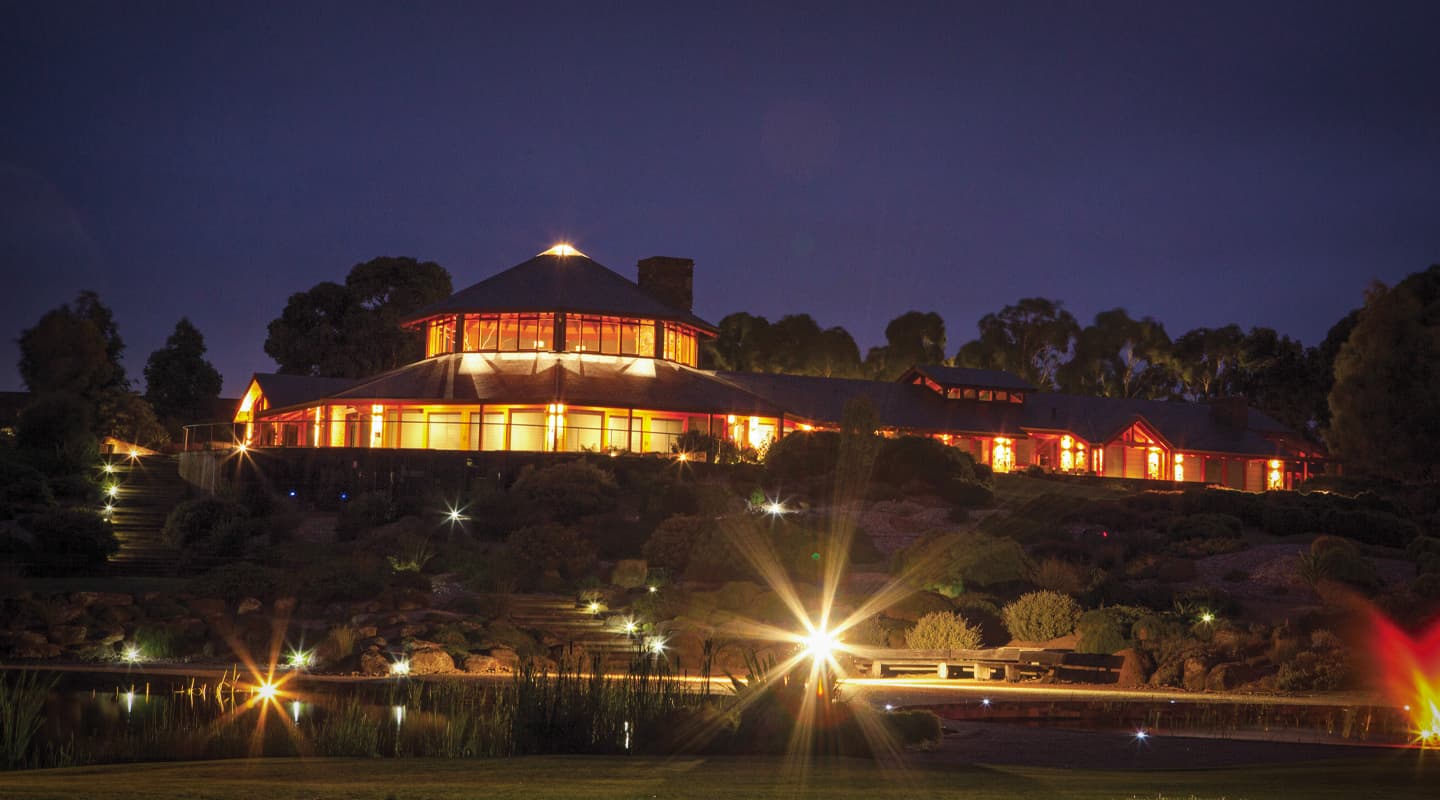
Not In My Backyard
Here’s a problem: how to automatically light, water and power the golf course of your 200-square ‘weekender’.
Text:/ Andy Ciddor
Here in Oz, the glorious land of the long weekend, almost everybody either has a backyard or has the dream of having one. I’m rather fond of backyards, but I’m not even slightly interested in gardening, so over my lifetime I’ve made a reasonable contribution to supporting our nation’s legions of lawn mowing and gardening blokes. I’m certain that if I ever win Lotto or I’m offered a lot of money not to publish my memoirs, I’ll hire a gardener on a regular basis to keep the garden looking immaculate with no effort on my part.
Out on the outskirts of Melbourne a similar story has unfolded, but on a totally different scale. The owner of this garden got to sell his technology company to a huge multinational corporation for quite a lot of money, so he decided to do up the family home and improve the backyard on what was now his weekend house. His backyard was quite a bit bigger than most because he grew up on a semi-rural property, so he had the space, and now also the time and the resources to really work on bringing his dream home and backyard into reality.
When the new house was built about five years ago Clever Living’s Bryan Adams (and before you ask: it’s Bryan Adams the AV systems guy, not Bryan Adams the rock star – poor bugger gets that every day) was engaged to design the lighting and AV control systems for the residence and later inveigled his way into working on the design for the exterior areas as well.
At over 2000sqm (200 squares), the residence is a large, comfortable and very informal place, with more lounge rooms, family rooms and recreation spaces than you can shake a Wii remote at. There are many bedrooms; all of them bright, airy, and at least the size of an entire inner-city apartment, and most with their own bathrooms. Over in the guest wing, the guest kitchen, which is quite a bit more compact than the main kitchen, could comfortably service a 100-seat restaurant and indeed was very recently used for all of the catering for a large family wedding.
LOFTY RACK ROOM
In the adjacent guest pantry, a loft access door folds down and a ladder provides access to the guest wing equipment room, which includes a decent size RJ45 patch panel for telecoms, security, dimming, and data. There’s also MATV distribution, 84 channels of Dynalite dimming and 40 channels of relay control for nearby lighting, blinds and curtains. This is one of the four equipment rooms distributed through the ceiling lofts of the house in an effort to keep load circuit and control data runs as short as possible in this very spread-out residence. The main equipment room with its racks of security, comms, satellite data, MATV, AV amplification and distribution and a couple of hundred channels of home automation systems is bit larger than my study, although being in a ceiling loft space, it doesn’t have much of a view.
Every light fixture and virtually every curtain or blind in the residence is controlled by the 500+ channel Dynalite automation system. Although there are over 70 engraved multi-button control panels for the local lighting and window covering control, aside from three PIR sensors near major entrances, there are no time-of-day, astronomically linked, remote controlled or automated tricks in the system.
LANDSCAPING TO THE FORE
While this home is vast and it does have an indoor pool and spa in the recreation room and a gym on one of the mezzanine areas, it’s really just a warm, friendly and comfortable family home – writ very, very large. Where this residence diverges from anything even vaguely ordinary is in the landscaping, which is where a sizeable chunk of the multinational corporation’s money has found its home.
The front garden is simply a few acres of landscaped native garden that screens the residence from the road. Behind the house, on land that slopes down towards the plains of Melbourne’s suburbs, is a barbeque area on a scale sufficient to feed a small to moderate size barbarian horde, and a lawn tennis court that could well have been transplanted from Kooyong. What’s a little more out of the ordinary is that the owner really likes to play a bit of golf, so the back yard now includes a professionally-designed nine-hole golf course, complete with all of the usual sand and water traps, a dam in the form of an artificial lake, and a creek that links all of the bodies of water.
Although the owners don’t attempt to play golf at night, as the course is largely downhill from the house and readily visible from many of the rooms, Clever Living were asked to light it in the style of many modern back gardens. On a project of this scale Bryan Adams has had the opportunity to deploy a wide selection of exterior fixtures ranging from dozens of small metal bollard-style luminaires around the paths, tees and greens, to simple linear QI floods on bunkers and water traps, and dichroic-filtered architectural up-lighters under some of the larger trees.
Due to the complexity of the installation and the need to keep the low voltage (12V) runs as short as possible to minimise the voltage drops, the lighting control equipment is distributed around the site in eight standard industrial weather-proof electrical distribution cabinets. Each cabinet has a 63A three-phase mains supply and contains and electrical distribution board, distribution frames for the STP data cables (presently only used by the DyNet network), one or more irrigation controllers and their associated UPS/line conditioning equipment and receiving antennas, step-down transformers for the nearby low-voltage luminaires and racks of Dynalite dimmers and relays.
“”
the electrical suppliers have brought a 22kV high tension feed into the property and terminated it at a sub-station that supplies 400A per phase
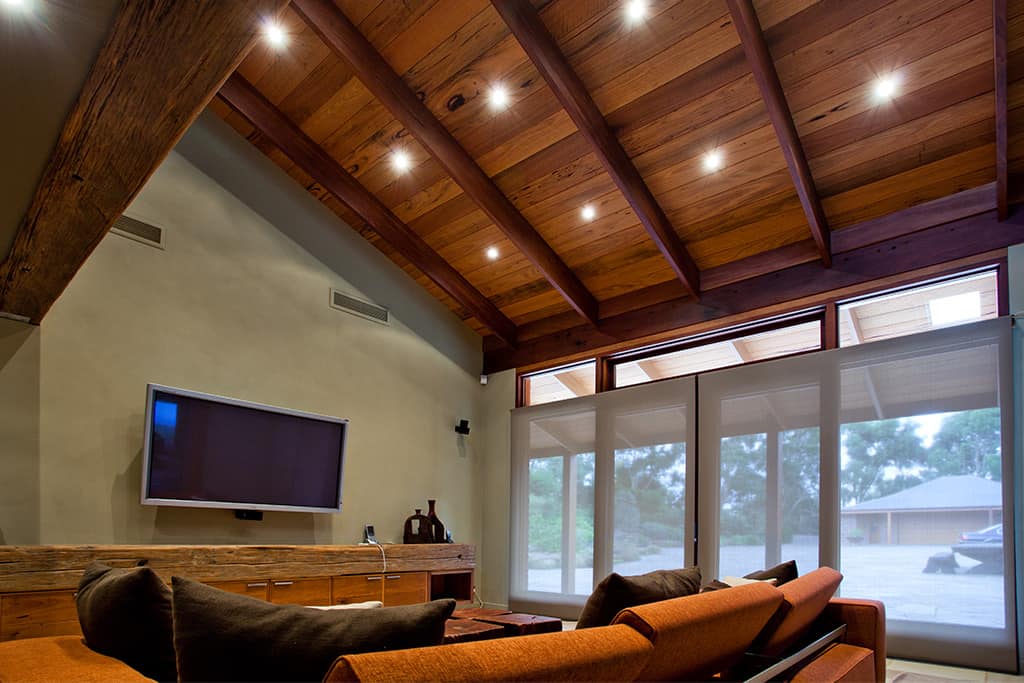
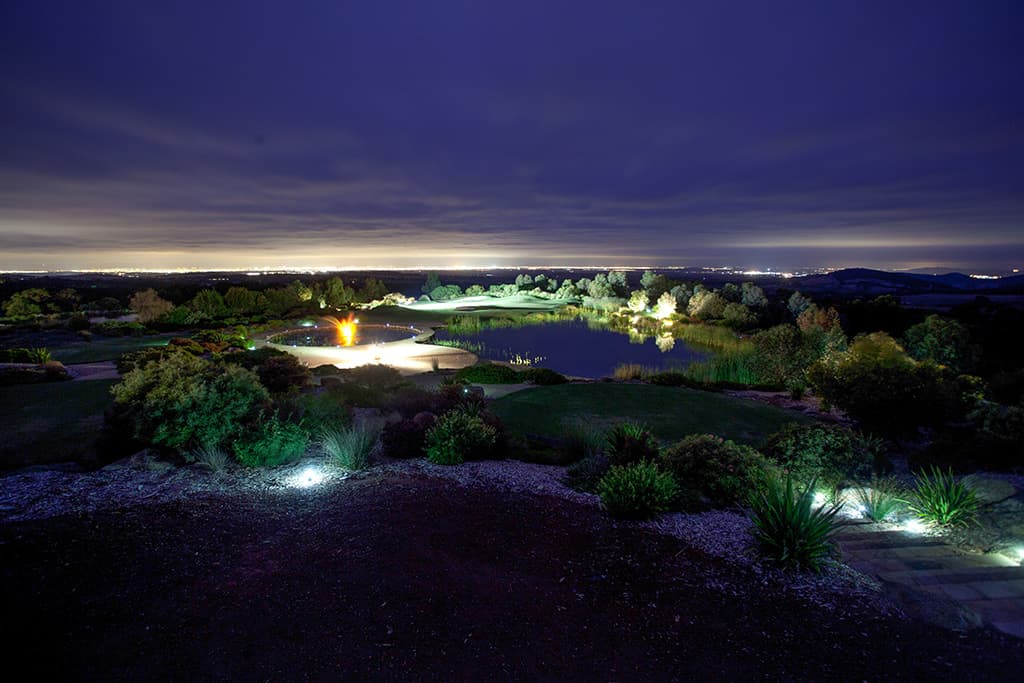
GPS FIX ON THE FIXTURES
Since the exterior lighting was installed and commissioned five years ago, there have been ongoing changes. Not only are fixtures constantly being strafed and disconnected by over-enthusiastic gardeners and greenkeepers who keep mowing them or slashing them down, but the landscaping is continuously being extended and modified. New beds and plants are added, requiring more fixtures to cover them and loads of mulch are being added to existing beds, frequently burying the fixtures that were installed in the area.
The maintenance team from Clever Living, led by senior technician Mike Wall, make rounds of the property playing ‘spot-the-fixture’ (or sometimes spot-the-cable-stub’) that’s been buried or relocated during the most recent gardening maintenance or upgrade. After the recent frenetic landscaping activity to dress some garden areas up for a family wedding, Bryan Adams is now proposing to do a precise GPS-based survey of all exterior fixtures to simplify the rescue and recovery of fixtures gone AWOL after landscaping activities.
The most difficult problem in maintaining the lighting system is water ingress. The relentless watering required to maintain the greens and the gardens in prime condition means that virtually every piece of cable and fixture is constantly wet. Even some devices rated at IP65 (able to withstand low pressure jets of water) succumb to constant immersion in mineralised water. Gaskets eventually get tired under such continuous stress, and waterproof fixtures, conduits and junction boxes eventually turn out not to be. Many of the buried conduits carrying cables under the paths and the greens may be cracked from gardening activities and even when new cables are pulled through them, they may come through wet. Some inaccessible cable runs are suffering from age and corrosion and have become a little reluctant to do their job, so the head-end step down transformers have been replaced or re-tapped to provide 15V so that a LED with an 8V threshold will still operate at the end of the line.
The new generation of drop-in replacement LED lamps has been the saving grace for many parts of the exterior installation. Their lower current requirement has allowed the Clever Living team to not only replace short-lived tungsten halogen lamps with something that lasts vastly longer, but the lower current requirement for the same light output, has reduced the demand on the ageing low-voltage cable runs.
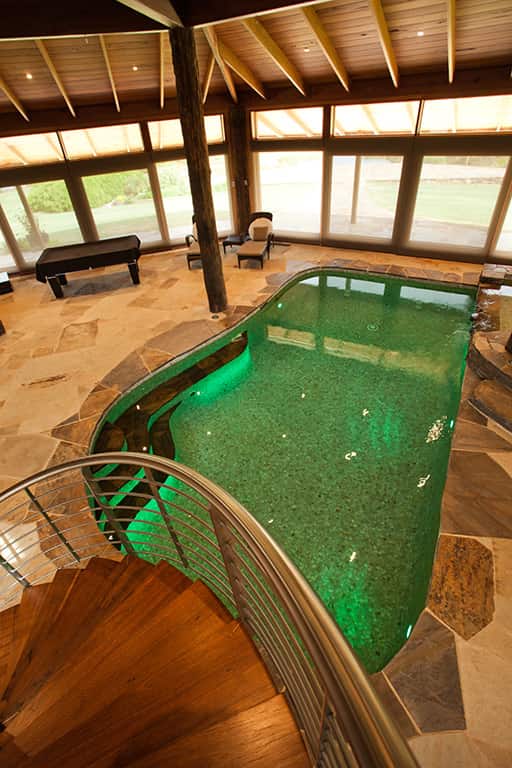
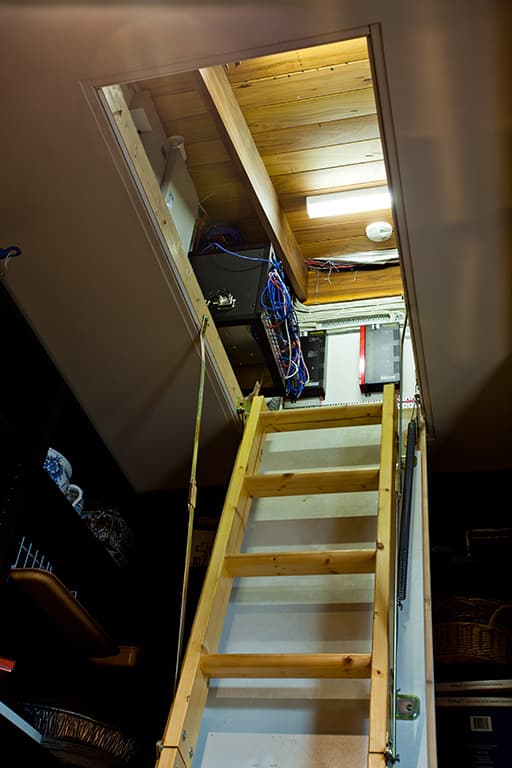
SUBSTATION & DESAL PLANT
To meet the power demands of the property with its water pumping and lighting requirements, the electrical suppliers have brought a 22kV high tension feed into the property and terminated it at a sub-station that supplies 400A per phase (that’s 288kVA) to the main distribution board.
Irrigation automation is controlled by a wireless-linked Motorola Scorpio commercial irrigation system driving a network of over 100 solenoid-operated valves. These water the golf course and the tennis court, while also recycling the water from the dam to the head of the creek at the top of the gravity-fed network of waterways. The exterior Dynalite system is used to control all of the small water pumps operating the fountains and other water features scattered around the backyard.
As the land is a former farm, on the side of a hill in the drought prone area that is greater Melbourne, there are no permanent natural watercourses to provide a reliable source of water for a thirsty golf course. In addition to the rainwater collected in the dam, irrigation water is drawn from a bore hole tapping into an artesian basin. The prolonged drought in Melbourne has increased the salinity of the artesian basin, leaving the water no longer suitable for use on lawn tennis courts or putting greens. The solution, of course, was to install a desalination plant with a capacity of around 30,000 litres per day, to improve the water quality. The desalinated bore water isn’t required for household use though, as the stored rainwater run-off from the roof a 2000sqm house is sufficient.
BIG BUDGET INNOVATION
From a commercial perspective this residence has been and will continue to be a source of both intriguing problems and the opportunity to solve them properly with a much less restrictive budget than is common in our industry. Let’s face it, how many residential projects use more dimmers than a couple of regional performing arts centres and offer you a stroll in the park while doing your maintenance rounds?















RESPONSES